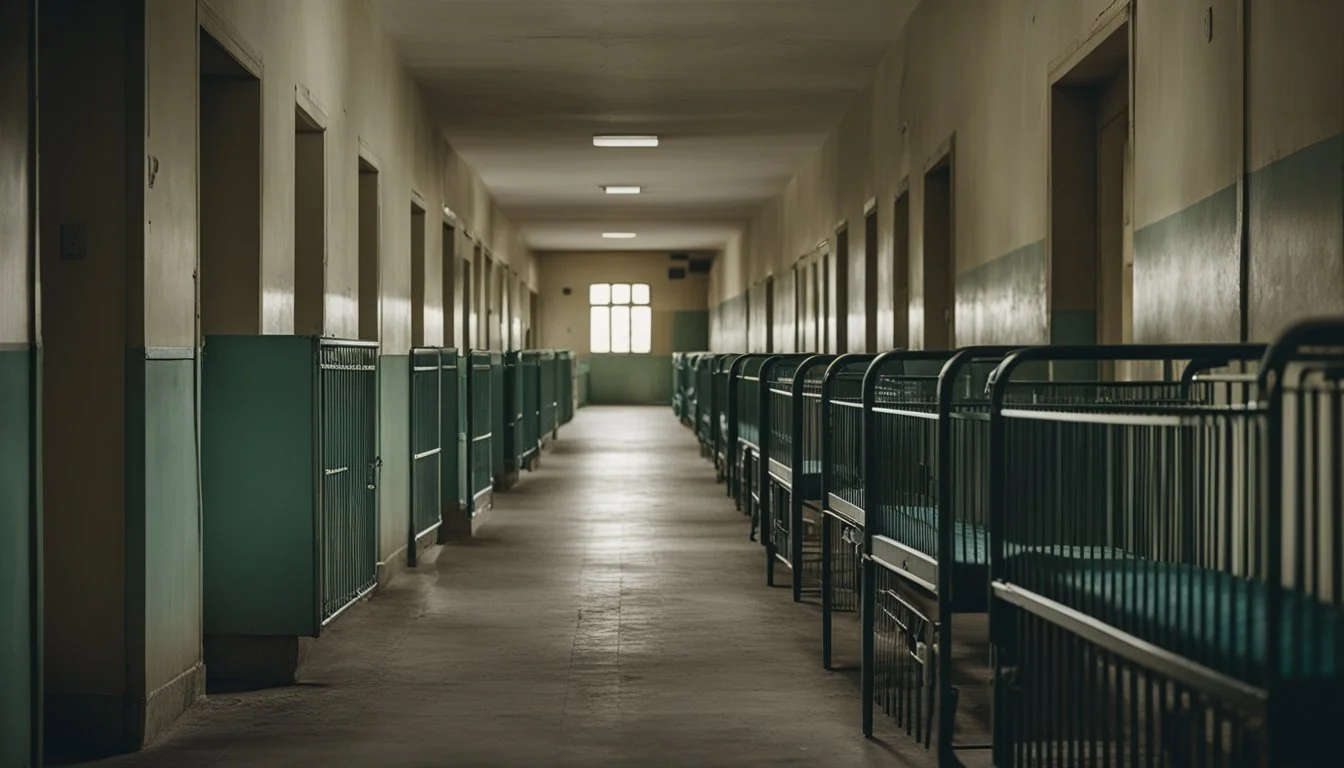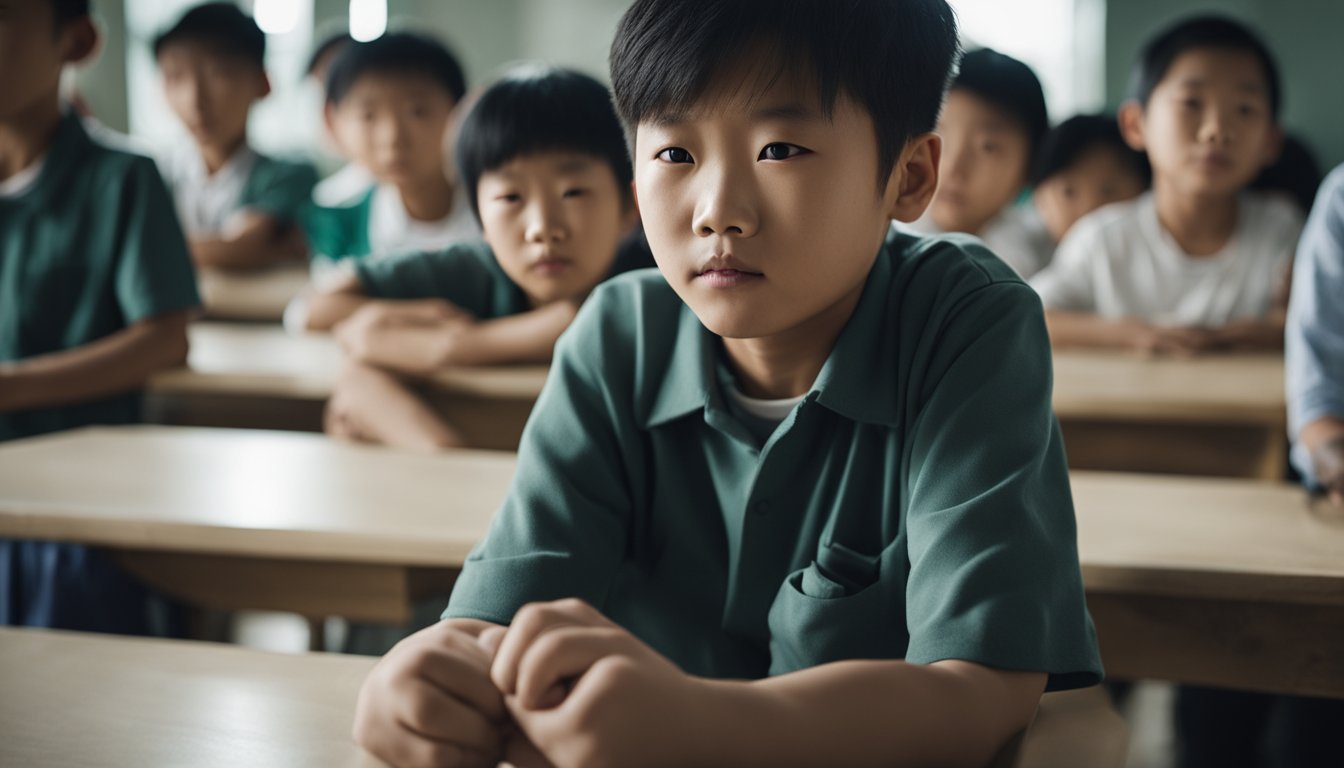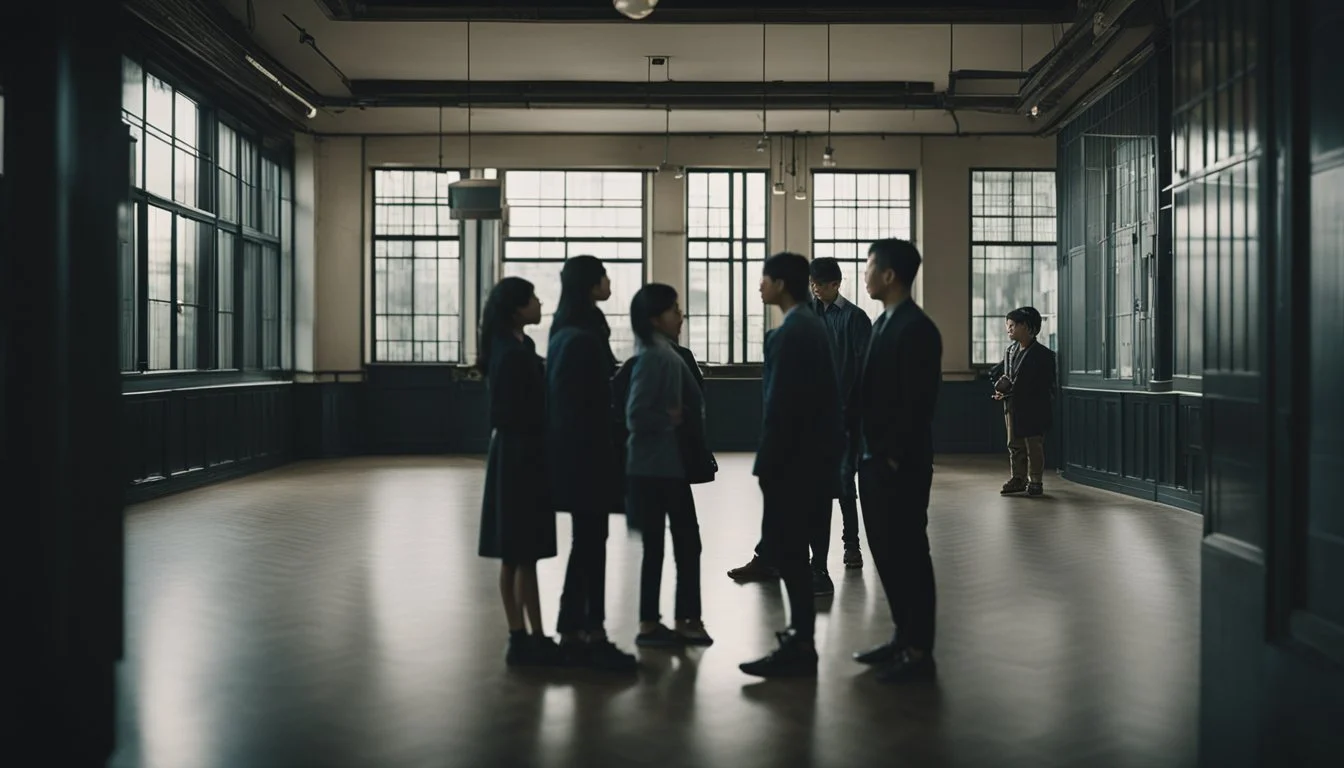The Dying Room Documentary Exposes Hidden Truths in Chinese Orphanages Through Undercover Filmmaking
In 1995, British filmmakers Kate Blewett and Brian Woods took on a dangerous mission to expose the conditions in Chinese state orphanages. Their groundbreaking documentary "The Dying Rooms" shed light on the dire circumstances faced by abandoned children, particularly girls, in these institutions.
The filmmakers went undercover, posing as charity workers, and used hidden cameras to capture footage inside eleven state-funded orphanages across China. Their clandestine efforts revealed shocking scenes of neglect and abuse, including toddlers tied to potty chairs for extended periods and rooms where children were left to perish without care or attention.
"The Dying Rooms" sparked international outrage upon its release, drawing attention to the consequences of China's One Child Policy and cultural preferences for male offspring. The documentary's impact led to increased scrutiny of orphanage conditions and inspired many families to adopt Chinese children, aiming to provide them with better lives outside the system.
Background on China's One-Child Policy
China's One-Child Policy, implemented in 1980, aimed to curb rapid population growth. This controversial measure had profound impacts on Chinese society, family structures, and gender dynamics.
Historical Context and Implementation
The One-Child Policy emerged from concerns about China's booming population in the 1970s. The government feared that unchecked growth would hinder economic development and strain resources. In response, they introduced strict family planning measures.
Couples were limited to having one child, with some exceptions for rural families and ethnic minorities. Enforcement methods included financial incentives, fines, and in some cases, forced abortions or sterilizations.
The policy was not uniformly applied across China. Urban areas saw stricter enforcement, while rural regions had more flexibility.
Implications for Families and Gender Imbalance
The One-Child Policy dramatically altered family dynamics in China. Traditional preferences for male children led to a significant gender imbalance. Many families, limited to one child, chose boys over girls.
This resulted in:
Increased rates of female infanticide and abandonment
Selective abortion of female fetuses
A skewed sex ratio at birth
By 2015, China had approximately 34 million more males than females. This imbalance created social and economic challenges, including a shortage of potential brides.
The policy also faced international criticism for human rights violations and its impact on family structures. In 2015, China officially ended the One-Child Policy, allowing couples to have two children.
Origin of 'The Dying Rooms' Concept
The term "dying rooms" emerged from a shocking discovery in Chinese orphanages during the mid-1990s. It exposed severe neglect and inhumane conditions faced by abandoned infants, sparking international outrage and prompting responses from the Chinese government.
The Discovery of Dying Rooms
British filmmakers Kate Blewett and Brian Woods uncovered the existence of "dying rooms" in 1995. They visited eleven state-funded orphanages in China, secretly filming in nine of them. Their footage revealed horrifying scenes of neglect and abuse.
Toddlers were found tied to potty chairs all day. Infants, many of them girls, were left to starve in dark rooms. The filmmakers documented one such child named Mei-Ming, meaning "no name," who was severely malnourished and ignored by staff.
These practices were linked to China's One Child Policy, which led to increased abandonment of female infants.
Public and Governmental Reactions
The release of "The Dying Rooms" documentary in 1995 caused global outrage. It won a Peabody Award in 1996, bringing widespread attention to the issue. The public was shocked by the conditions and treatment of children in these orphanages.
The Chinese government initially denied the allegations. They produced a rebuttal film titled "The Dying Rooms: A Patchwork of Lies" in 1996. This counter-documentary disputed some claims, asserting that Mei-Ming was actually a boy admitted to the orphanage that year.
Despite denials, the film's impact led to increased scrutiny of Chinese orphanages. It sparked debates about international adoption policies and China's child welfare system.
Investigative Methodology of the Filmmakers
Kate Blewett and Brian Woods employed daring undercover techniques to expose conditions in Chinese orphanages. Their approach raised significant ethical questions about covert filming practices.
Undercover Techniques
Blewett and Woods posed as aid workers to gain access to orphanages. They used hidden cameras concealed in bags and clothing to capture footage secretly. The filmmakers meticulously planned their cover stories and equipment to avoid detection.
They spent weeks inside multiple facilities, carefully documenting daily routines and interactions. At great personal risk, they filmed malnourished children and neglectful staff practices. The team worked quickly and discreetly to gather evidence before arousing suspicion.
Ethical Considerations
The covert nature of the filming raised ethical concerns. Critics questioned if the deception was justified, even for exposing human rights abuses. The filmmakers argued the ends outweighed the means given the severity of the situation.
They took precautions to protect vulnerable children's identities in the final edit. The team also grappled with the ethics of filming sick and dying infants without consent. Ultimately, they felt compelled to share the shocking reality with the world.
Some worried the exposé could harm China-West relations or lead to backlash against orphanages. The filmmakers stood by their methods as necessary to shed light on hidden injustices.
Critical Examination of Orphanage Conditions
The investigation into Chinese state orphanages revealed severe neglect and inhumane treatment of children. Undercover footage exposed distressing living conditions and a lack of proper care, particularly affecting young girls abandoned due to cultural preferences and population control policies.
Life Inside the Orphanages
Children in these institutions faced dire circumstances daily. Many were confined to their cribs or tied to chairs for extended periods. Toys and stimulating activities were scarce or nonexistent. Nannies were often overwhelmed, with ratios as high as 1 caregiver to 20 children.
The orphanages lacked basic necessities. Rooms were cold, damp, and poorly lit. Hygiene was substandard, with children left in soiled clothing for hours. Food was scarce and of poor quality, leading to malnutrition.
Abuse was not uncommon. Some staff members were observed treating children roughly or ignoring their cries for attention. The lack of responsive care severely impacted the children's emotional well-being.
Health and Developmental Issues
The neglectful environment had profound effects on the orphans' health and development. Malnutrition was rampant, causing stunted growth and weakened immune systems. Many children showed signs of physical and cognitive delays.
Lack of stimulation and human interaction led to severe developmental issues. Children exhibited rocking behaviors, detachment, and difficulty forming emotional bonds. Some were non-verbal well past the typical age for speech development.
Medical care was inadequate or absent. Illnesses went untreated, and children with disabilities received little to no specialized attention. Child development experts noted that these conditions could lead to lifelong physical and psychological problems for the orphans.
The Impact of 'The Dying Room' Worldwide
'The Dying Room' documentary sparked global outrage and prompted significant changes in international adoption practices and child welfare policies. Its shocking footage exposed the dire conditions in Chinese orphanages, leading to widespread criticism and calls for reform.
Raising International Awareness
The film's release in 1995 thrust the issue of child neglect in Chinese orphanages into the global spotlight. Viewers were horrified by scenes of malnourished infants tied to chairs and left unattended. Media outlets worldwide covered the story, amplifying its reach and impact.
Human rights organizations used the documentary as evidence to pressure the Chinese government for reforms. The film's imagery became a powerful tool for advocacy groups campaigning for improved orphanage conditions and children's rights.
Public reaction was intense. Donations to charities working in Chinese orphanages increased dramatically. Many individuals were moved to consider international adoption, seeking to provide homes for children in need.
Influence on Adoption and Child Welfare Policies
'The Dying Room' led to significant changes in international adoption practices. Western countries tightened regulations for adoptions from China, implementing stricter oversight and follow-up procedures.
The Chinese government, facing international pressure, invested in improving orphanage conditions. New facilities were built, and staff training was enhanced. The one-child policy, which contributed to the abandonment of female infants, came under increased scrutiny.
Child welfare organizations expanded their presence in China. They provided resources, training, and support to improve care standards. International aid programs focused on nutrition, healthcare, and education for orphaned children increased.
The documentary's legacy continues to influence child welfare policies globally. It serves as a cautionary tale, highlighting the importance of transparency and accountability in childcare institutions.
Responses from the Chinese Government and Citizens
The exposure of conditions in Chinese orphanages sparked reactions from both officials and the public. Government statements and policy shifts emerged alongside evolving public opinion and calls for social change.
Official Statements and Policy Changes
The Chinese government initially denied the allegations presented in "The Dying Room" documentary. Officials claimed the film misrepresented isolated incidents and did not reflect the overall state of orphanages nationwide.
In response to international pressure, China implemented new regulations for orphanages. These included improved staff training, increased funding, and stricter oversight of facilities.
The government also launched initiatives to promote domestic adoption and reduce stigma around orphans. Public awareness campaigns highlighted success stories of adopted children.
Chinese Public Opinion and Social Change
Many Chinese citizens expressed shock and outrage upon learning about orphanage conditions. Social media platforms saw widespread discussions on child welfare reform.
Grassroots organizations emerged to support orphans and advocate for improved care standards. Volunteer groups organized visits to orphanages and fundraising efforts.
Public attitudes toward adoption gradually shifted. More families began considering adopting domestically, especially children with special needs.
Cultural views on family structure and filial piety were challenged, with growing acceptance of non-biological children.
Filmmaking Challenges and Achievements
The making of 'The Dying Room' presented significant obstacles for the filmmakers, while also garnering critical acclaim for its impact and execution.
Logistical Hurdles in Covert Operations
The filmmakers faced numerous challenges while documenting conditions in Chinese orphanages. They had to use concealed cameras to capture footage without detection. This required careful planning and execution to avoid suspicion.
The crew visited eleven state-funded orphanages, successfully filming in nine of them. They had to navigate strict security measures and potential government interference.
Language barriers and cultural differences added complexity to their undercover work. The team needed to blend in while gathering sensitive information.
Ethical considerations also played a role. The filmmakers had to balance exposing harsh realities with protecting the identities of vulnerable children and staff.
Awards and Recognitions for 'The Dying Room'
'The Dying Room' received significant recognition for its groundbreaking expose. The documentary won a prestigious Peabody Award in 1996, acknowledging its excellence in broadcasting.
Channel 4 in the United Kingdom aired the film first, bringing international attention to the issue. Its impact led to a follow-up film, 'Return to the Dying Rooms', released in 1996.
The documentary's success extended beyond the UK. Cinemax aired it in the United States in 1996, further expanding its reach and influence.
The film's awards and broadcasts on major networks validated the risks taken by the filmmakers. It sparked global discussions about conditions in Chinese orphanages.
Aftermath and Ongoing Discussions
The release of "The Dying Room" sparked global outrage and initiated significant changes in Chinese orphanages. It also prompted ongoing discussions about child welfare in institutional care settings.
Post-Release Effects on Chinese Orphanages
The documentary's impact was immediate and far-reaching. Chinese authorities faced international pressure to improve conditions in orphanages. Many facilities underwent renovations and increased staffing. The government allocated more resources to orphan care and began allowing international adoptions on a larger scale.
Some orphanages partnered with foreign NGOs to implement better caregiving practices. Staff received training in child development and nurturing techniques. The focus shifted from mere survival to providing emotional support and stimulation for children.
However, progress was uneven across the country. Rural orphanages often lagged behind urban centers in implementing reforms. Challenges persisted in addressing the root causes of child abandonment, particularly of girls and children with disabilities.
Continuing the Dialogue on Child Welfare
"The Dying Room" catalyzed a broader conversation about institutional care for vulnerable children. Child welfare experts emphasized the importance of family-based care over orphanages. This led to efforts to promote domestic adoption and foster care programs in China.
Organizations like Half the Sky Foundation worked to transform Chinese orphanages through caregiver training and enrichment programs. They aimed to create more nurturing environments for children who remained in institutional care.
The film also highlighted the need for poverty alleviation and support for families at risk of abandoning children. Social workers began playing a larger role in prevention and family preservation efforts.
Internationally, the documentary influenced adoption policies and practices. It raised awareness about the complex ethical issues surrounding international adoption from countries like China.






